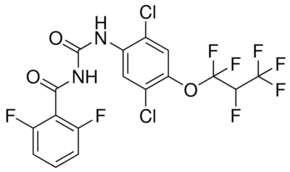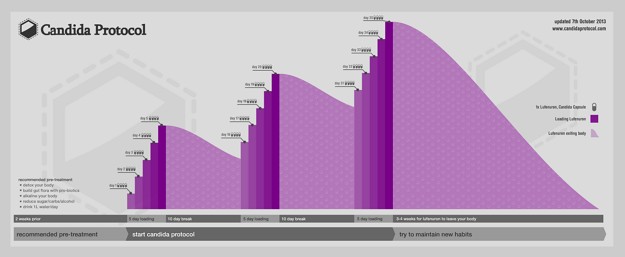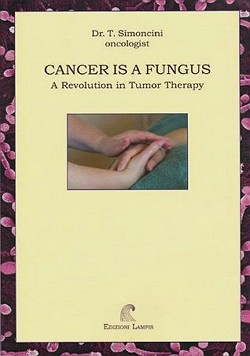Code LUF-1 / 120 Capsules x 700 mg. / Price: $39.95
(sent by courier direct from Thailand)


or years the effects of the compound, lufenuron, have been known for its
anti-fungal properties, in both animals and people.
In 2000, for example,
a nearly 300-case study
was published in the American Journal of the
American Veterinary Medical Association, showing
that "lufenuron provides an effective, convenient, and rapid method for treating fungal infections in dogs and cats."
(Other studies have come to similar conclusions, and some of these are posted in the column to the right.)
AO Candida Caps Are Safe & Effective
Against Candida Overgrowth

Unlike most antifungal medications, AO Candida Caps have few, if any,
side effects. It doesn't tax the liver, kidneys, or endocrine system. (In fact, lufenuron is eliminated through
the feces). It's easy to take and solid results are
normally experienced after the first 15 day cycle (see below). The mechanism of action is clearly understood:
Candida uses chitin-synthesis as a defensive-mechanism to prevent the deterioration of its cell membrane.
It's a logical choice as chitin is the second most abundant polysaccharide in nature after cellulose.

AO Candida Caps causes the chitin to deteriorate, leaving the
fungal cell membrane exposed to "in vivo" elements. This, in turn, causes the bleeding out of inter-cellular
organs, killing the fungus.

This action poses no threat to any human or other mammalian bodily function,
as we do not produce or use chitin. However, most fungus, yeast, and mold are all dependent on chitin production for their
survival, and many of these are pathogenic to humans -- thus, AO Candida Caps will not only clear out candidiasis,
but any other condition caused by a microorganisms that uses chitin as part of its cell membrane protection
strategy.

Additionally, lufenuron is safe for diabetics, since it has no caloric value,
and it will not interfere with whatever probiotic or prebiotic regimen you happen to be taking. When stored in a
cool, dry place, has a minimum shelf-life of five years.
 Click above to see the original Candida Protocol Load Program
Click above to see the original Candida Protocol Load Program
How the Candida Protocol Works
 [Note:
[Note: The information below was carried by the now defunct
site,
candidaprotocol.com. We've known several practitioners who have used this protocol quite succesfully,
many with slight variations. Below, we provide the protocol as it was originally given with improvement based on
input from the practitioners we know who have used it successfully.
As always, questions can be addressed to
support@herbhealers.com.]

The Candida Protocol targets Candida overgrowth using Candida Capsules over
a 35 day period. Candida Capsules progressively load Lufenuron into the fatty tissues of your body. The gradual loading
process attacks the Candida overgrowth, breaking holes in the chitin cell wall of the fungi, allowing your immune system
to kill it off. In this process you may experience "die-off" symptoms, if you do, indeed, have a fungal overgrowth problem.
- Take a candida capsule (700 mg. Lufenuron), 4 times a day, around 4 hours apart. Take this WITH 10 grams of saturated natural fat -- coconut
oil, butter, cheese, and cream are all good choices. Do this for 5 strasight days,
break for 10 days. (You can think of this as one cycle, so, therefore, a cycle lasts 15 days). Repeat the three times, totaling 35 days.
(See chart above.)
- The capsules must be taken with at least 10 grams of natural fat in order to be absorbed into the body. Lufenuron dissolves in fat and is
stored in the fat tissues, where it is gradually released into your bloodstream. If the Lufenuron is taken without food that contains some oils
or fats, it will not be fully absorbed in the fat tissues and will not be effective.
Things You Can Do To Improve Results

We strongly recommend a pre-treatment in preparation for the 35 day Candida Protocol. These are some important
items that can greatly improve your results:
- Detox your body, especially from toxic heavy metals. Effective products: zeolite, clay baths, and oil pulling.
- Build good gut flora with pro-biotics. (Do not take antibiotics during this treatment period).
- Maintain a sugar and alcohol free diet throughout the course of treatment for best results.
- Drink filtered water and reduce consumption of acidic pH beverages like coffee, tea, sports/soda drinks.

These recommendations can be started 2 weeks prior to the 35 day Candida Protocol,
and continued during the protocol.

Lufenuron has no side effects, but it can bring on feelings of unease during the Candida "die-off"
phase. When the Candida is attacked it releases toxins into the body causing die-off symptoms. Die-off symptoms may include fatigue, brain fog,
nausea, gas, bloating, diarrhea or constipation, low grade fever, headache, sore throat, body itch, muscle and / or joint soreness or pain,
feeling as if coming down with a flu.

The die-off symptoms can last from one day to one week and can come and go throughout the Lufenuron treatment.
However, as your body becomes stronger, your susceptibility to Candida toxins is reduced and as a result, so are your die-off symptoms.

The severity of symptoms depends upon the strength of the organs most affected by Candida, your immune
system, the degree of Candida infestation, and the environmental and/or emotional stress you are experiencing.

Now that you have eliminated the Candida overgrowth, it is important to maintain a healthy body to keep Candida
at bay. Lifestyle changes -- healthy eating with minimal sugar, carbohydrates, and maintaining an alkaline pH will keep your body in balance and
prevent Candida from taking over. In some cases (systemic candida overgrowth), a second treatment of the 35 day Lufenuron protocol is recommended
to fully rid the extreme Candida overgrowth.

Lufenuron is an effective veterinarian remedy that targets the outer protective shell of Candida (Chitin).
It is not metabolised or eliminated by the liver or kidneys; it is excreted through the feces. Lufenuron prevents Chitin formation allowing your own
immune system to attack the Candida.

There are different grades of Lufenuron, a high grade purity of 99+% is best to use, as we use
in AO Candida Capsules.


There are quite a number of people in the alternative cancer field who believe that
cancer is a fungus. Interestingly, the leading proponent of this line of thinking is oncologist, Dr. Tullio Simoncini.
In fact, his landmark book on the subject is entitled,
Cancer is a Fungus: A Revolution in Tumor Therapy. He has
even recommended patients taking large doses of sodium bicarbonate to attack the fungus. Having worked in the field over 30 years
ourselves, we feel that this is an oversimplification. If it were true, customers who had cancer could take
AO Candida Capsules
and nothing else, and cure their cancer. There
are reported cases where people have taken lufenuron and had a complete remission;
however, we believe that this is insufficient to make this kind of claim. Similarly we have known many people who have followed
various sodium bicarbonate protocols and not experienced the positive effects on their cancer that they were looking for.
Worse still, Simoncini took up the practice of using an injectable form of sodium bicarbonate -- one that resulted in the death
of two patients. This brought him enormous legal trouble.


Simoncini's position reminds us of that of the late naturopath, Dr. Hulga Regehr Clark, who took
the position in books with titles like,
The Cure for All Cancers and
The Cure for All Advanced Cancers that all cancers
were caused by parasites. In this case, the liver fluke -- which to us is extracting a frequent contributor and turning it into a
universal etiology. We do not, however, wish our
comments to be interpreted as besmirching either the work of Simoncini or Clark. Both of them have offered valuable clinical insights.
Neither of these practitioners, in our estimation, however, provided a complete picture that could be extrapolated as relating to all cancer.

Our belief is that there are many cancers that benefit from clearing out the underlying fungus.
In fact, we can tell from the use of escharotics applied topically when there is a high count of fungus in the blood.
Getting rid of opportunistic pathogens
always helps someone who has a degenerative condition. Always. But that doesn't necessary
mean that this one measure alone will arrest the disease. Each case is different.